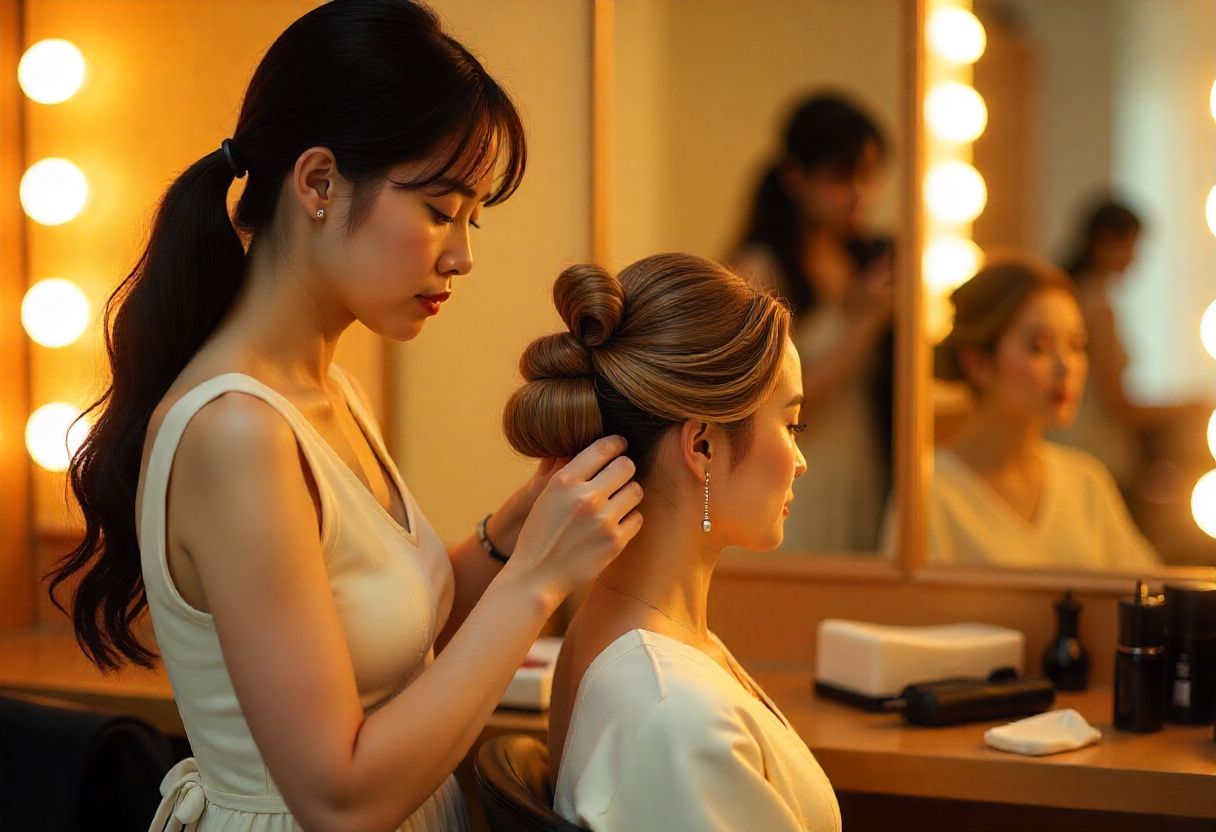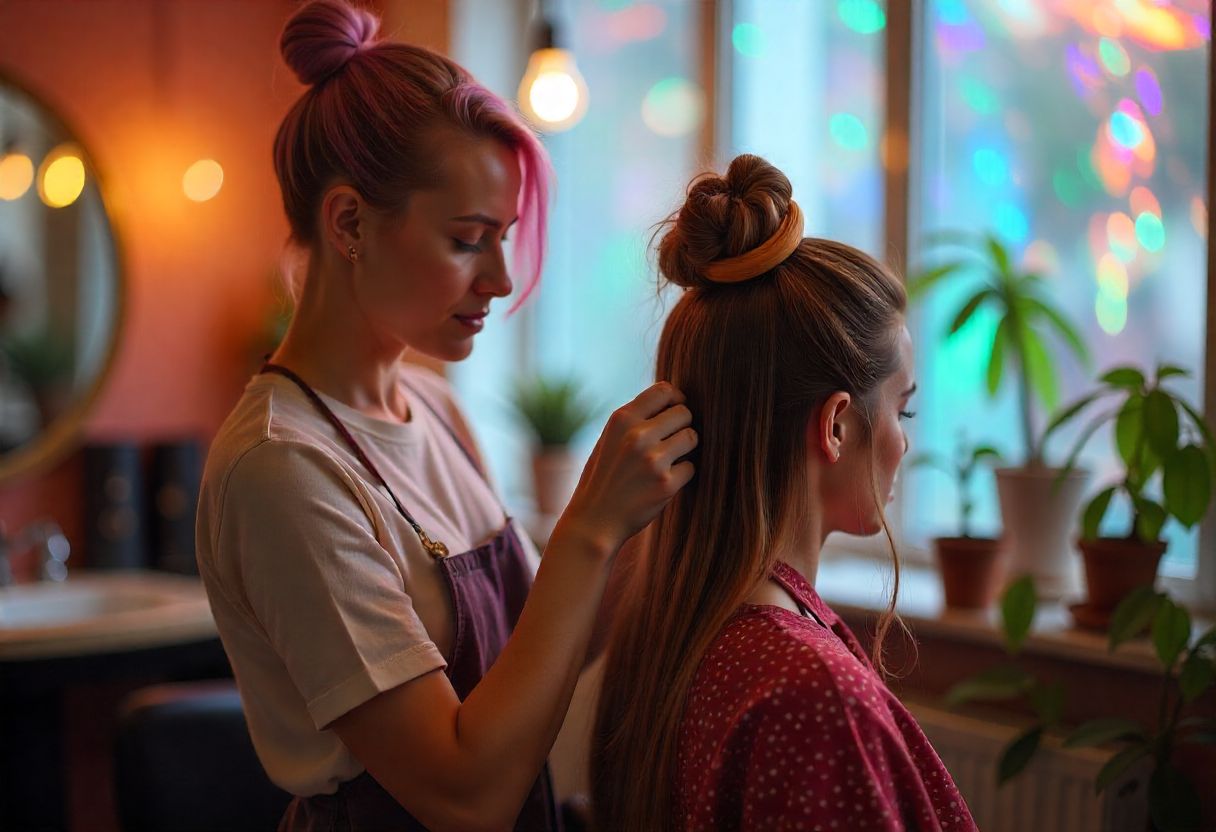
مطالب مرتبط
بیشتر بخوانید

Introduction
Updo hairstyling is the art of combining beauty, technical skill, and client psychology. Contrary to common belief, an updo is not just “gathering hair”; it involves a precise understanding of hair type, advanced techniques, professional tools, attention to detail, and creating long-lasting results. Even professional updo artists may not know certain key tips that can significantly enhance the quality of their work.
In this version, in addition to the main tips, practical exercises, common mistakes, hidden tricks, and real-life examples from professional updo artists’ experiences are provided.
Knowing the hair is the foundation of successful updos. Without a precise understanding of hair type, thickness, and texture, no technique can yield ideal results.

Hair Types and Recommended Techniques
| Hair Type | Characteristics | Suggested Technique |
|---|---|---|
| Fine | Low volume, straight or slightly frizzy | Use volumizing mousse, precise backcombing, light spray |
| Thick | Voluminous, hard to control | Precise sectioning, strong spray, appropriate heat tools |
| Curly/Wavy | Irregular, puffy | Initial straightening or shaping, anti-frizz cream, medium heat |
| Straight | Low volume and slippery | Setting spray, backcombing, use of strong pins |
Practical Exercise: Before any updo, select a hair section and test volumizing and fixing techniques to determine the best method for the hair type.
Professional Tip: Always have a brief consultation with the client. Ask: “The last time you had an updo, what caused you difficulty?” The client’s answer guides your technique.
Proper preparation is half the path to success.
Preparation Steps:
Step-by-Step Exercise: Test a small hair section with each product before starting the updo to determine the final result.
Correct sectioning is the key to controlling an updo.
Professional Trick: Precise sectioning allows proper control of hand pressure and pin direction, resulting in a symmetrical and stable final updo.
The right tools ensure quality and durability.
Essential Tools:

Professional Trick: Spray pins lightly before use to prevent slipping and secure them firmly in the hair.
Practical Exercise: After finishing the updo, take photos from different angles and check for perfect volume and symmetry.
| Face Type | Recommendations | Practical Example |
|---|---|---|
| Round | Height on the crown, avoid excessive width | Classic bun with slight volume at the back |
| Long | Volume on sides, low height | Semi-open updo with side braids |
| Open Neck | High or semi-open updo | Open updo with French braid |
| Collared or Heavy Neckline | Low, tight updo | Low secured updo with hidden pins |

Professional Trick: A smile and confidence relax the client and improve updo quality.
| Mistake | Problem | Professional Solution |
|---|---|---|
| Excessive product use | Heavy, flat hair | Use appropriate amount in layers |
| Improper sectioning | Asymmetrical, loose updo | Precise sectioning and pre-practice |
| Wrong pins | Slippage and instability | Use correct pins and fix with spray |
| Ignoring face and outfit | Mismatched style | Evaluate face and outfit before starting |
Conclusion
A professional updo artist must integrate:
With continuous practice and learning hidden tricks, even professionals can elevate their work and deliver flawless updos. This version serves as a comprehensive, practical guide for updo artists of all levels and can be published as an educational and professional reference on your website.